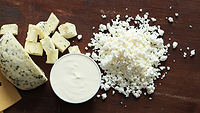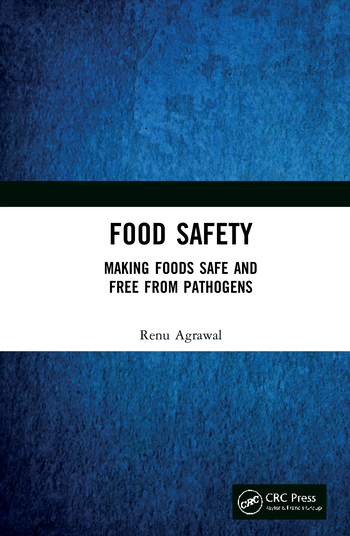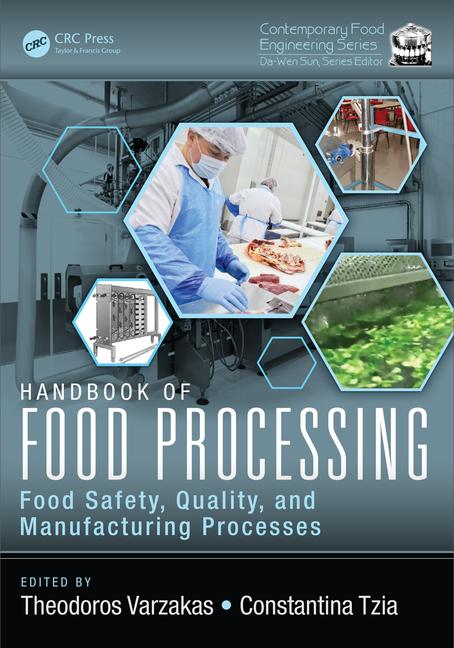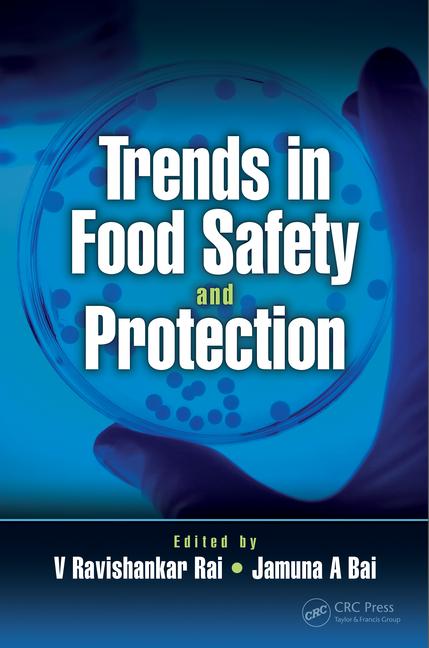Identification of Biofilm-Forming Foodborne Pathogens and Development of Prevention Strategies

Image credit: Dr_Microbe/iStock/Getty Images Plus via Getty Images
A recent study emerged from Penn State University about multispecies biofilms that provide Listeria monocytogenes with a strategy against sanitizers.1 This study brings much-needed attention to a persistent problem in the food safety community. Here, I provide several comments on this topic.
What is Biofilm? Understanding Structure and Function
A biofilm is a complex and dynamic community of microorganisms that adhere to surfaces and are encased in a matrix of extracellular polymeric substances (EPS). Biofilms can form on a wide range of surfaces, including natural substrates such as rocks and plant surfaces, as well as artificial surfaces such as medical implants, industrial equipment, and food processing equipment.
The structure of a biofilm can vary depending on the microbial composition, environmental conditions, and substrate characteristics, but generally consists of the following components:
- Microbial cells: The biofilm is composed of microbial cells, including bacteria, archaea, fungi, and algae, that adhere to the surface and form a dense population within the biofilm matrix. These microbial cells can comprise various species and may exhibit different physiological and metabolic activities depending on their position within the biofilm.
- Extracellular polymeric substances: EPS are a complex mixture of polysaccharides, proteins, lipids, and nucleic acids that are produced by microbial cells within the biofilm. EPS serve as a matrix that holds the microbial cells together and provides structural support to the biofilm. EPS also play a crucial role in protecting microbial cells from environmental stressors, facilitating nutrient uptake and exchange, and mediating interactions between microbial cells and their surroundings.
- Water channels: Biofilms contain a network of water channels or pores that allow for the diffusion of nutrients, gases, and signaling molecules throughout the biofilm. These water channels help maintain the hydration and metabolic activity of microbial cells within the biofilm and facilitate the exchange of metabolites and signaling molecules between cells.
- Microbial aggregates and microcolonies: Within the biofilm, microbial cells can aggregate and form microcolonies or clusters that are surrounded by EPS. These microcolonies can vary in size and composition, with different microbial species or strains often coexisting within the same biofilm. Microbial aggregates and microcolonies contribute to the spatial organization and heterogeneity of the biofilm structure.
The functions of biofilms are diverse and multifaceted, with various roles in microbial ecology, environmental processes, and human health. Some key functions of biofilms include:
- Protection and survival: Biofilms provide microbial cells with protection from environmental stressors such as desiccation, UV radiation, and antimicrobial agents. The EPS matrix acts as a physical barrier that shields microbial cells from external threats and helps maintain a stable microenvironment within the biofilm, allowing cells to survive and persist in challenging conditions.
- Adhesion and attachment: Biofilms enable microbial cells to adhere firmly to surfaces and substrates, facilitating their colonization and persistence in diverse environments. Adhesion to surfaces is mediated by interactions among microbial cells and surface molecules, as well as the production of adhesins and extracellular appendages such as pili and fimbriae.
- Nutrient cycling and metabolism: Within biofilms, microbial cells can metabolize organic matter and nutrients from the surrounding environment, contributing to nutrient cycling and biogeochemical processes. EPS facilitate the retention and concentration of nutrients within the biofilm, providing a continuous supply of resources for microbial growth and metabolism.
- Horizontal gene transfer: Biofilms promote the exchange of genetic material between microbial cells through processes such as horizontal gene transfer, transformation, and conjugation. This genetic exchange can lead to the acquisition of beneficial traits such as antibiotic resistance, virulence factors, and metabolic capabilities, enhancing the adaptability and fitness of the microbial community.
- Interactions and communication: Microbial cells within biofilms engage in complex interactions and communication mechanisms, including quorum sensing, cell-cell signaling, and interspecies interactions. These interactions allow microbial cells to coordinate their activities, regulate gene expression, and respond collectively to environmental cues, leading to emergent properties and behaviors within the biofilm community.
Overall, biofilms play a critical role in microbial ecology, ecosystem functioning, and human health, with implications for various fields including environmental science, medicine, biotechnology, and food safety. Understanding the structure and function of biofilms is essential for developing effective strategies to control microbial biofilm formation, mitigate biofilm-related risks, and harness the beneficial properties of biofilms for various applications.
What Foodborne Pathogens Can Form Biofilms?
Several foodborne pathogens have the ability to form biofilms. Biofilm formation can enhance the survival, persistence, and resistance of pathogens in food processing environments, increasing the risk of foodborne illness. Some common biofilm-forming foodborne pathogens include:
- Listeria monocytogenes: L. monocytogenes is a pathogenic bacterium that can form biofilms on various food processing surfaces, including equipment, pipes, and conveyor belts. Biofilms formed by L. monocytogenes can pose a significant risk to food safety, as they can contaminate food products and persist in food processing environments.
- Salmonella spp.: Various serotypes of Salmonella can form biofilms on surfaces in food processing facilities, allowing the bacteria to survive and spread. Salmonella biofilms are a concern in the food industry due to their resistance to cleaning and sanitation procedures, which can lead to contamination of food products.
- Escherichia coli (E. coli): Certain strains of E. coli, including enterohemorrhagic E. coli (EHEC) and enteropathogenic E. coli (EPEC), have been shown to form biofilms on food contact surfaces. Biofilm formation by E. coli can contribute to the persistence of the bacteria in food processing environments and increase the risk of contamination.
Why Do These Foodborne Pathogen Form Biofilms?
Foodborne pathogens form biofilms as a survival strategy to thrive in diverse environmental conditions and persist in food processing environments. Biofilm formation provides several advantages to these pathogens:
- Protection from environmental stressors: Biofilms provide a protective barrier that shields microbial cells from external stressors such as temperature fluctuations, desiccation, and chemical disinfectants. The EPS that make up the biofilm matrix help maintain a stable microenvironment within the biofilm, allowing microbial cells to withstand adverse conditions and survive for extended periods.
- Resistance to antimicrobial agents: Biofilm-forming pathogens exhibit increased resistance to antimicrobial agents compared to their planktonic (free-floating) counterparts. The matrix of EPS in biofilms acts as a physical barrier that limits the penetration of antimicrobial agents, while the metabolic activity of microbial cells within the biofilm can further contribute to antimicrobial resistance through mechanisms such as the upregulation of efflux pumps and the formation of persister cells.
- Enhanced nutrient availability: Biofilms facilitate the retention and concentration of nutrients from the surrounding environment, providing a continuous supply of essential nutrients for microbial growth and metabolism. Microbial cells within the biofilm can metabolize organic matter and release metabolic byproducts, creating a nutrient-rich microenvironment that supports their growth and proliferation.
- Adherence to surfaces: Biofilm formation allows microbial cells to adhere firmly to surfaces, including food contact surfaces, equipment, and plumbing fixtures. This adherence helps pathogens to colonize and persist in food processing environments, where they can contaminate food products and contribute to foodborne illness outbreaks. Biofilm formation on surfaces can also promote the accumulation of organic matter and other debris, providing additional nutrients for microbial growth.
- Facilitation of horizontal gene transfer: Within biofilms, microbial cells are in close proximity to one another, facilitating the exchange of genetic material through processes such as horizontal gene transfer. This can lead to the acquisition of virulence factors, antimicrobial resistance genes, and other traits that enhance the pathogenicity and survival of the microbial community.
Overall, biofilm formation enables foodborne pathogens to adapt to and thrive in challenging environmental conditions, persist in food processing environments, and resist eradication by antimicrobial agents and other control measures. By forming biofilms, these pathogens increase their chances of survival and dissemination, posing significant risks to food safety and public health.
Preferred Locations and Time Required for Biofilm Formation
The time required for biofilm formation by foodborne pathogens can vary depending on various factors, including the specific pathogen, environmental conditions, and the characteristics of the surface. In general, biofilm formation can occur relatively quickly, with initial attachment of microbial cells to surfaces occurring within minutes to hours, followed by the development of mature biofilms over a period of hours to days. Some pathogens may form biofilms more rapidly than others, and the process can be influenced by factors such as temperature, humidity, nutrient availability, and the presence of other microorganisms.
Preferred locations for biofilm formation by foodborne pathogens typically include surfaces in food processing environments that provide suitable conditions for microbial attachment and growth. These surfaces may include:
- Food contact surfaces: Surfaces that come into direct contact with food products, such as processing equipment, conveyor belts, cutting boards, and utensils, are preferred sites for biofilm formation. Pathogens can attach to these surfaces during processing and handling of food products, leading to contamination and potential foodborne illness if not properly controlled.
- Processing equipment: Equipment used in food processing facilities, including tanks, pipes, valves, and fittings, can serve as substrates for biofilm formation. Microbial cells can colonize these surfaces and form biofilms, which can be difficult to remove and may contaminate food products during processing.
- Drains and plumbing: Drains, floor drains, and plumbing fixtures in food processing facilities can become contaminated with biofilms, particularly in areas where moisture and organic matter accumulate. Biofilms in drains and plumbing systems can serve as reservoirs for pathogens and contribute to the spread of contamination throughout the facility.
- Cooling towers and HVAC systems: Cooling towers and heating, ventilation, and air conditioning (HVAC) systems can provide conducive conditions for biofilm formation, particularly in warm and humid environments. Biofilms in these systems can harbor pathogens and facilitate their dispersal through air and water droplets.
- Packaging materials: Packaging materials, such as plastic films, cardboard boxes, and paper bags, can become contaminated with biofilms if exposed to moisture and organic matter during storage or transportation. Contaminated packaging materials can introduce pathogens into food products and contribute to foodborne illness outbreaks.
Overall, any surface in a food processing environment that provides a suitable substrate for microbial attachment and growth, along with conducive environmental conditions such as moisture and nutrients, can potentially support biofilm formation by foodborne pathogens. Therefore, it is essential for food manufacturers to implement effective cleaning and sanitation practices, proper equipment design and maintenance, and stringent hygiene measures to prevent and control biofilm formation and reduce the risk of foodborne illness. Regular monitoring and surveillance for biofilm presence can also help identify potential risks and implement appropriate control measures to ensure food safety.
Prevention and Control Strategies for Biofilm-Forming Foodborne Pathogens
To prevent and control biofilm-forming pathogens in food processing environments, several strategies can be implemented:
- Effective cleaning and sanitation: Regular cleaning and sanitation of food processing equipment and surfaces are essential for preventing biofilm formation and removing existing biofilms. Use of appropriate cleaning agents and sanitizers, along with mechanical scrubbing or agitation, can help disrupt and remove biofilms from surfaces.
- Design and maintenance of equipment: Proper design and maintenance of food processing equipment can help prevent the formation of biofilms. Smooth, non-porous surfaces that are resistant to microbial attachment should be used whenever possible, and equipment should be regularly inspected and maintained to prevent biofilm formation in hard-to-reach areas.
- Temperature and pH control: Controlling temperature and pH levels in food processing environments can help inhibit biofilm formation by limiting the growth of biofilm-forming pathogens. Maintaining temperatures below the optimal range for microbial growth and ensuring proper pH levels can help reduce the risk of biofilm formation.
- Use of antimicrobial agents: Antimicrobial agents, such as sanitizers and disinfectants, can be used to inhibit biofilm formation and control the growth of biofilm-forming pathogens. However, it is important to use these agents properly and in accordance with manufacturer instructions to ensure effectiveness and minimize the risk of resistance development.
- Implementation of Good Manufacturing Practices (GMPs): Adherence to GMPs, including proper hygiene, employee training, and facility design, is essential for preventing biofilm formation and controlling the spread of pathogens in food processing environments. By maintaining high standards of cleanliness and sanitation, food manufacturers can minimize the risk of biofilm-related contamination incidents.
Overall, a multi-faceted approach that combines effective cleaning and sanitation practices, proper equipment design and maintenance, temperature and pH control measures, use of antimicrobial agents, and implementation of good manufacturing practices is necessary for preventing and controlling biofilm-forming pathogens in food processing environments. Regular monitoring and surveillance for biofilm formation can also help identify potential risks and implement appropriate control measures to ensure food safety.
- Food Safety Magazine Editorial Team. "Study Highlights Importance of Addressing Biofilm-Forming Pathogens to Control Listeria in Food Processing Facilities." Food Safety Magazine. February 9, 2024. https://www.food-safety.com/articles/9229-study-highlights-importance-of-addressing-biofilm-forming-pathogens-to-control-listeria-in-food-processing-facilities.
Looking for a reprint of this article?
From high-res PDFs to custom plaques, order your copy today!











